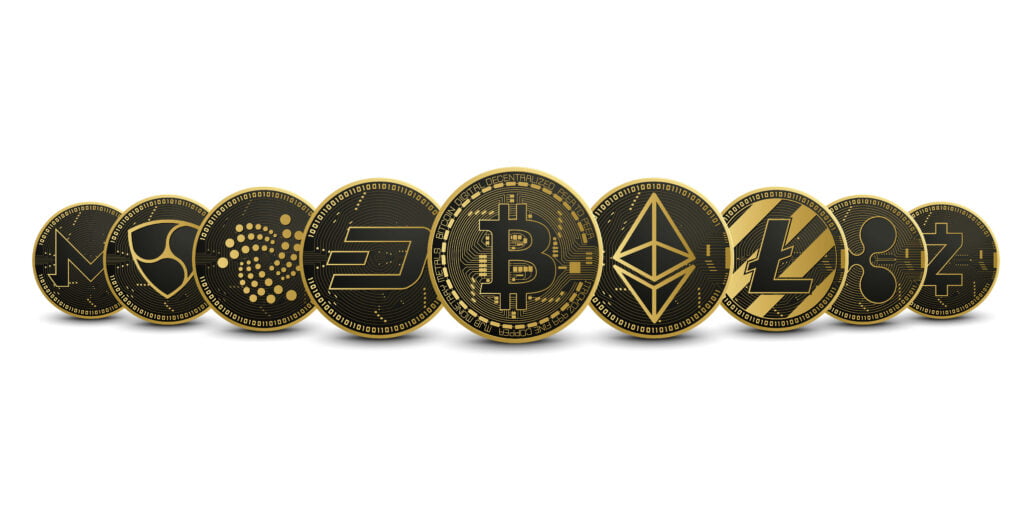Digital transformation is welcomed into all sectors, and the latest technological advancements that accompany it seem to diversify quickly. Once people see the potential of such technologies, they’re immediately tempted to invest in them. Cryptocurrencies are a great example of this behaviour because they make excellent investment opportunities due to their increased fluidity. Digital currencies are governed by blockchain technology that functions like a decentralised ledger and is basically the backbone of cryptocurrencies and numerous other utilities.
The cryptocurrency boom was followed by increasing attention turned towards altcoins and stablecoins, which have gained the reputation of profitable cryptocurrencies. Some would say that Bitcoin and Ethereum stand alone, but let’s not forget that Ethereum is also an altcoin. So, when we talk about altcoins, we also refer to Ethereum.
What are altcoins?
Bitcoin was the first cryptocurrency introduced on the market, and it quickly became the most popular asset in the market. However, since its introduction, several other digital currencies have been created, such as Litecoin, Ethereum, Ripple, and many others. They’re described as alternatives to Bitcoin and therefore have been named altcoins. Multiple types of altcoins available on the market, like security tokens, utility tokens, and mining-based cryptocurrencies, require a mining process.
However, altcoins aren’t structurally different from Bitcoin but provide different benefits to users. Investors need a digital wallet to sell and hold Bitcoin, altcoins, and crypto exchanges to trade tokens. The blockchain system powers both altcoins and Bitcoin, storing information about transactions to prevent data erase or manipulation. High price fluctuations and a volatile market characterise altcoins. For example the Ethereum price registered a slight drop over the last few months, and crypto specialists expect it to spike back up now that it has completed the Merge.

What are stablecoins?
Even if altcoins have gained widespread popularity in the market, many investors are sceptical about adding them to their portfolios due to their high volatility. Crypto developers created stablecoins in a bid to deal with the high volatility and limitations associated with digital currencies. Stablecoins mimic the features of traditional currencies like the pound, dollar, or euro and are characterised by relative price stability to facilitate asset transactions. They achieve price stability because a reserved asset backs them.
By definition, stablecoins are altcoins even if their value is fixed to an external asset. When you fix a currency to another asset, you ensure its value and intervene in the market whenever required to ensure its price is as close to the external asset as possible.
Why are altcoins relevant in the crypto market?
Even if altcoins are a minority in the crypto market according to their value, they make up almost the entire marketplace. Therefore, investors interested in making a profit should add altcoins to their portfolios. Altcoins are relevant in the market due to the opportunities they offer.
They’re affordable investments
Bitcoin and Ethereum are popular and, therefore, expensive assets, and few investors afford to purchase them. However, Ethereum and Bitcoin prices could deter beginner investors who don’t have enough funds to invest in high-priced assets. The other altcoins are more affordable, and investors can purchase them for a couple of dollars.
They’re emerging digital assets
All new cryptocurrencies launched on the market are altcoins. Therefore, investors who want to add innovative assets to their portfolios should track altcoins because they could provide explosive returns. Undiscovered assets like cryptocurrencies provide a unique kind of gain because, as opposed to Bitcoin, they are more volatile and not established on the market, so they could register dramatic price movements.
They facilitate portfolio diversity
Most cryptocurrency investors have Bitcoin and Ethereum in their portfolios because the two digital currencies dominate the market. However, those chasing profits are looking for ways to diversify their portfolios and invest in altcoins.
Why are stablecoins relevant in the crypto market?
Now let’s discuss stablecoins, which are assets most people find difficult to describe and understand. Stablecoins were created to allow people to move money in and out of digital currencies. Despite what industry developers preach, no digital currency was yet created as a true spendable asset. Cryptocurrency prices are quite volatile and make it challenging for merchants to accept them because it takes them a long time to process payments via modern standards. Also, when the holders don’t transfer all their crypto to cash, they’re left with assets that might be worth a radically different value from one day to another.
Therefore, traders prefer to convert their assets to stablecoins and hold them until they want to reinvest in other assets or transform them into spendable money. The premise behind stablecoins is that they hold a fixed value, which provides an essential utility for investors. It’s important to remember that stablecoins aren’t investment assets because their value doesn’t fluctuate. If it did, it would create an arbitrage opportunity. Industry experts predict that stablecoins will become a household payment method because they support fast and efficient payment options.
There are several types of stablecoins
Stablecoins rely on pervasive technology that comes in several forms. Depending on how it’s implemented, it enables the creation of diverse types of stablecoins.
Public algorithm stablecoins are backed by smart contracts and rely on automatic defensive techniques. The most well-known algorithm stablecoins are Basis, IRON, Fei, and Dai.
Public reserve-backed stablecoins are developed by centralised companies and backed by cash-equivalent stablecoin benefits like commercial papers, deposits, and T-bills.
Financial and non-financial organisations create private or institutional stablecoins to facilitate transactions between internal accounts for users residing on the same network.
Crypto-collateralised are digital currencies used as collaterals for stablecoins. They are based on protocols that maintain their value at $1. The most popular ones are Havven and MakerDAO.
Non-collateralised stablecoins aren’t backed by collateral but are similar to traditional currencies because they have an identical operating process, so a central bank monitors them.
Valuable assets like precious metals and lubricants back commodity-backed stablecoins.
Ready to add a new cryptocurrency to your portfolio? Will you choose a classic altcoin or stablecoin?
Author

Immersive tech enthusiast, diving into the NFT currents reshaping the Metaverse.





